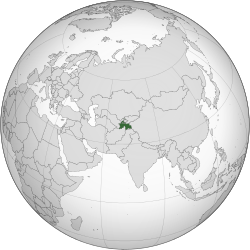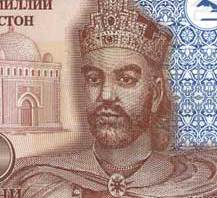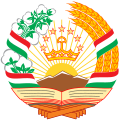| Symbol | Name | Image |
|---|---|---|
| Official name | Republic of Tajikistan (and Tajikistan) |  |
| National flag | Flag of Tajikistan |  |
| National emblem | Coat of arms of Tajikistan |  |
| National anthem | National anthem of Tajikistan |  |
| National founder | Ismail Samani |  |
| National animal | Marco Polo sheep (Ovis ammon polii) |  |
| National bird | Golden eagle (Aquila chrysaetos) |  |
| National flower | Red tulip (Tulipa gesneriana) |  |
| National tree | Chinar (Platanus orientalis) |  |
| National currency | Tajikistani somoni |  |
| National dances | Pamiri dance, Women's dance Ostin, Ufar dance |  |
| National instruments | Dutar, tanbur, rubab, tar, setar, ghijjak, doira, nay, karnay, surnay |  |
| National poet | Abdullah Rudaki, Abdurahman Jami, Nasir Khusrav, Abulqasim Firdavsi, Umar Khayyam, Hafiz Sherazi, Jalaliddin Balkhi Mirzo Tursunzoda, Loyiq Sherali, Mirsaid Mirshakar, Gulnazar Keldi |  |
| Patron saint | Muhammad, Ahura Mazda |
The national symbols of Tajikistan are defined in Article 3 of the Constitution of Tajikistan. They consist of the flag, the coat of arms, and the national anthem.
- The flag of Tajikistan
- The emblem of Tajikistan

